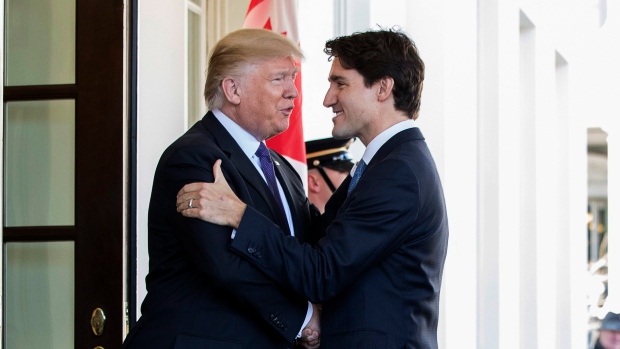May 17, 2017
Canada-U.S. trade ties may get more than 'tweaking': Poll
, Reuters

Canada's trading arrangement with the United States may still be subject to more than minor tweaks, according to economists polled by Reuters who said the Bank of Canada will remain cautious and keep policy on hold well into next year.
After assuring Prime Minister Justin Trudeau in February the North American Free Trade Agreement (NAFTA) only needed "tweaking," U.S. President Donald Trump has since accused Canada's dairy industry of protectionism, and has proposed a border tax that has unnerved Canadian policymakers.
The United States has since also imposed duties on Canadian softwood lumber, reviving a trade dispute that first started more than 30 years ago.
When Reuters surveyed the same panel of economists shortly after the February meeting between Trump and Trudeau, they were not concerned there would be any major changes to NAFTA.
But in a new poll conducted May 12-16, they were, and said this could deal a material hit to Canada's economy, which sends over 75 per cent of its exports south of the border.
"Concerns on the trade front, particularly after the lumber issue, will likely keep the Bank of Canada on hold at least through this year as it judges how the Canadian economy performs," said Nick Exarhos, economist at CIBC Capital Markets.
- Trump's trade officials prefer trilateral NAFTA deal, say U.S. senators
- Trump to notify Congress on NAFTA renegotiation next week: Mexican official
- Canada reportedly taps veteran negotiator to drive talks on NAFTA
NAFTA WATCH
"If we were to lose free market access in large parts of the U.S., that would be pretty disastrous for our exports and also for business investment in the Canadian economy," he added.
Taken with uncertainty over what impact the latest government moves will have on a red-hot urban housing market, along with recent problems at mortgage lender Home Capital Group Inc (HCG.TO), the central bank seems likely to hold rates where they are for about another year.
Although the Bank of Canada recently raised its economic growth outlook for 2017, the consensus view in the latest poll was for rates to remain at 0.50 percent until the second quarter of next year, versus the first quarter in a poll a month ago. Rates are then expected to rise by 25 basis points.
Forecasts in Reuters polls have vacillated between the first, second and third quarters for the past six months.
Analysts in the poll gave only a median 15 per cent probability the next move would be a rate cut. The Bank reduced rates twice in 2015 but has held them steady since.